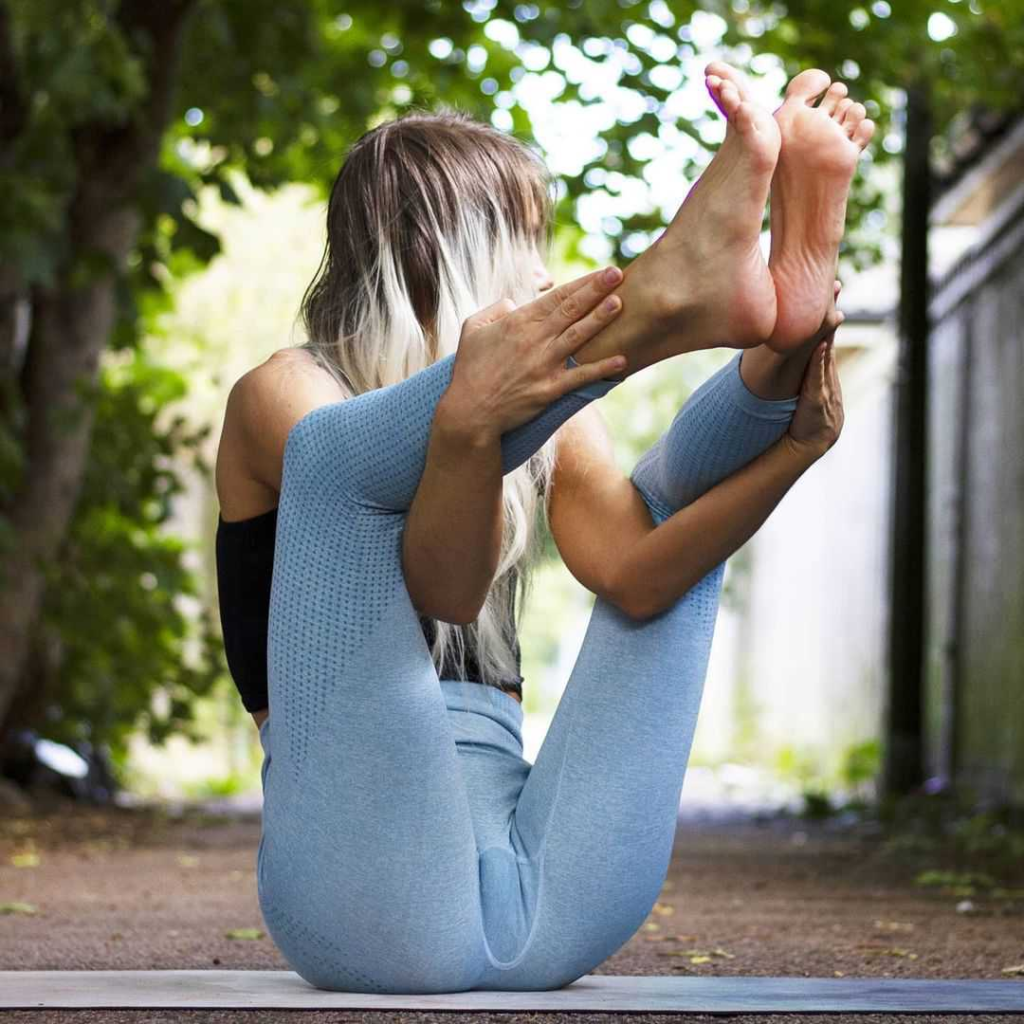Pregnancy is a transformative time, filled with the joy of motherhood. It’s important to approach it in a healthy way, especially if you’re concerned about gaining excessive weight. While yoga can be beneficial, it’s crucial to be cautious and not overexert yourself, as it may negatively impact your health. In this article, we will highlight certain yoga poses to avoid during pregnancy, providing detailed explanations for each pose.
Chaturanga Dandasana:

The first pose to avoid is Chaturanga Dandasana, also known as the Four-Limbed Staff Pose. This pose involves a sharp fall and heel step, which can pose a risk if your belly alignment isn’t correct. To ensure your baby’s safety, it’s best to avoid this pose altogether. Instead, consider practicing a plank or a modified version of Chaturanga.
Marichyasana

Another pose to avoid is Marichyasana, or any closed twists. These poses deepen the belly into the thigh and rotate the spine, which may not be favorable for your baby’s well-being.
Chakrasana

Chakrasana, or the Wheel Pose, should also be avoided during pregnancy. As your belly grows, backbends like this pose can increase the risk of abdominal tearing and strain on your back.
Balasana

While the Child’s Pose, or Balasana, may seem gentle and safe during the second trimester, it’s recommended to avoid it in the third trimester. As your baby starts to turn headfirst, poses like inversions and headstands should be avoided.
Hot yoga

Hot yoga, which involves practicing in a high-temperature environment, should be completely avoided during pregnancy. Elevated temperatures can increase the risk of miscarriage and neural tube defects. Sauna yoga and practicing yoga in the sun should also be avoided.
Utkatasana

Avoid positions that require lying on your belly, such as Utkatasana (Chair Twist). Instead, explore alternative positions like the revolved triangle, chair twist, or half prayer twist.
Halasana

Halasana, the Plow Pose, should be avoided as well. Getting into and out of this pose involves folding over, which places excessive stress on your core muscles. Complete backbends like Halasana are contraindicated in the second and third trimesters.
Shirshasana

Shirshasana, the Headstand Pose, should be avoided during the first trimester. Inversions can be challenging, and falling out of these poses may cause harm or injury. Being inverted in the later stages of pregnancy can also make breathing difficult due to increased pressure on the ribs.
Bhujangasana

Bhujangasana, or the Cobra Pose, requires lying flat on your stomach, which puts pressure on the abdomen and can cause discomfort for you and your baby. It’s advisable to choose alternatives like the Bridge Pose.
Salamba Sarvangasana

Shoulder stands, like Salamba Sarvangasana, should be avoided unless you have experience with inversions. Falling out of poses can lead to injuries, and being inverted later in pregnancy can make breathing challenging.
Dhanurasana

Dhanurasana, or the Bow Pose, places extreme pressure on the core muscles and is not recommended during pregnancy. The Bridge Pose can be a safer alternative.
Virabhadrasana

The Warrior Pose (Virabhadrasana) is beneficial in the first and second trimesters, it can become more challenging in the third trimester due to changes in balance. Modify the pose as needed to accommodate your body.
Shalabhasana

Avoid the Locust Pose (Shalabhasana), as lying flat on your stomach puts excessive pressure on the abdomen and fetus. It’s important to avoid or modify poses that compress the belly.
Paschimottanasana

Seated Forward Bend (Paschimottanasana) should be approached with caution as it can strain the lower back and abdomen. Seated Wide Angle is a more comfortable and safe alternative.
Traditional Savasana

During the first trimester, lying on your back for the traditional Savasana (Corpse Pose) is acceptable. However, in the second and third trimesters, it’s advisable to lie on your side instead to avoid pressure on the inferior vena cava.
Natarajasana

Natarajasana, or the Dancer Pose, should be avoided during pregnancy due to the risk of losing balance and its deep backbend. Consider using a chair or bar for support if you still want to practice a modified version of this pose.
Pregnancy is a wonderful and special phase in a woman’s life. During this time, it is important for pregnant women to be cautious about certain practices and yoga poses. However, if they receive guidance from their healthcare provider and pay attention to their own bodies, they can continue to practice yoga and experience its benefits throughout their pregnancy. It is crucial for pregnant women to prioritize their health and well-being during this period, and practicing yoga can be a valuable tool in achieving that. By being mindful and aware, they can maintain a meaningful yoga practice that supports their physical and emotional well-being.
